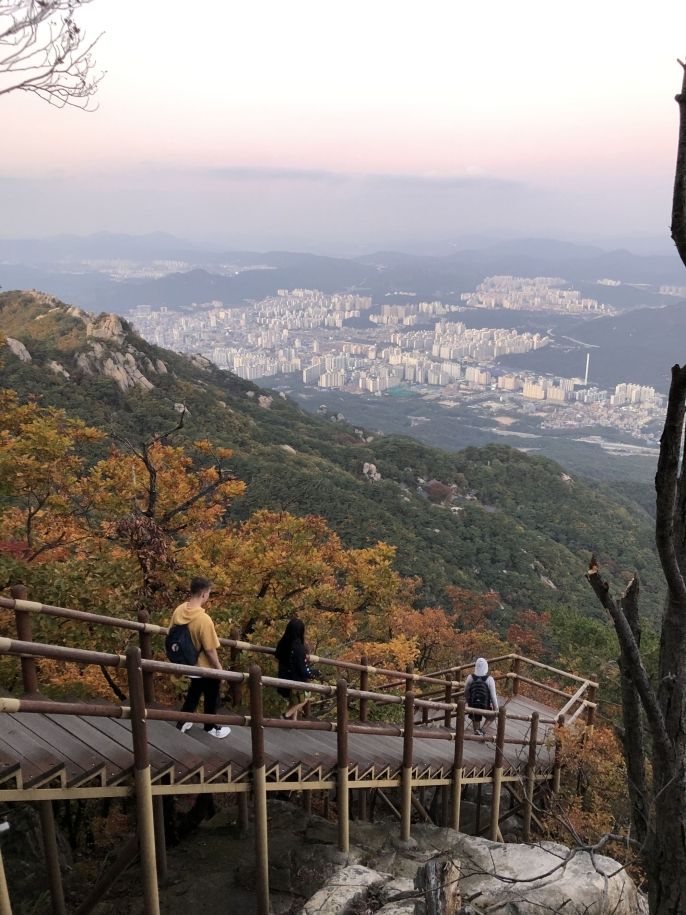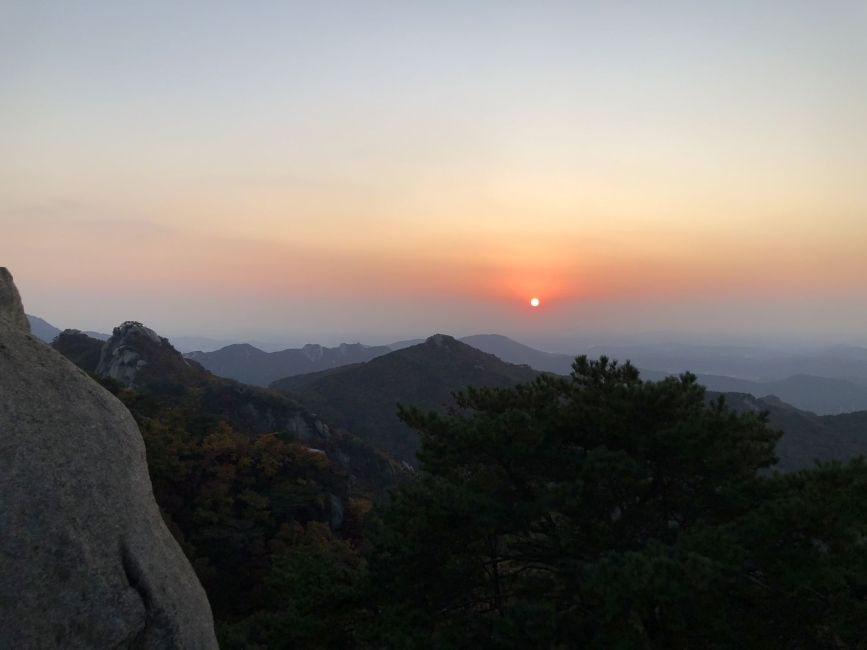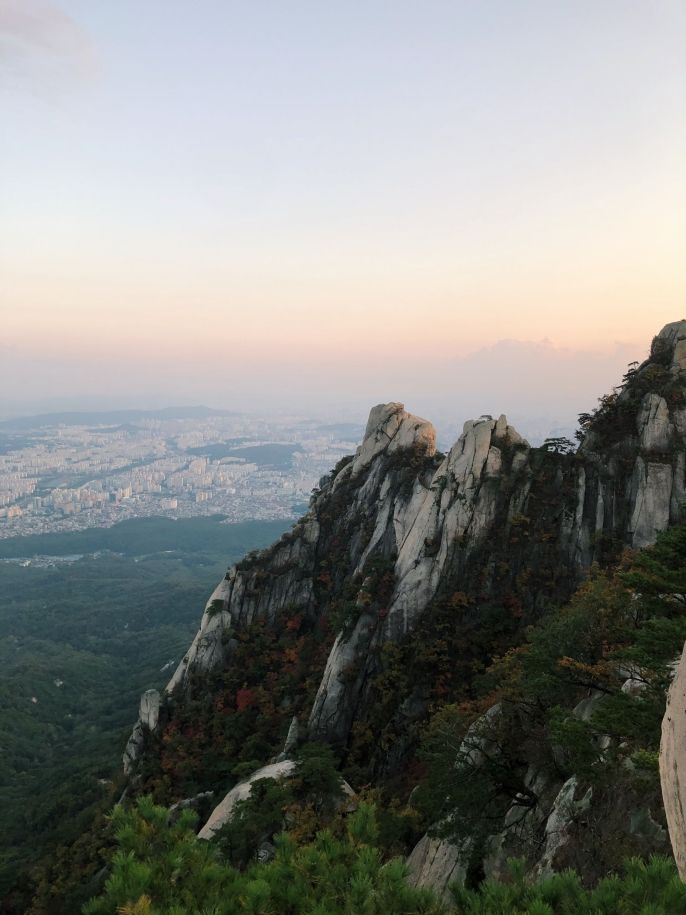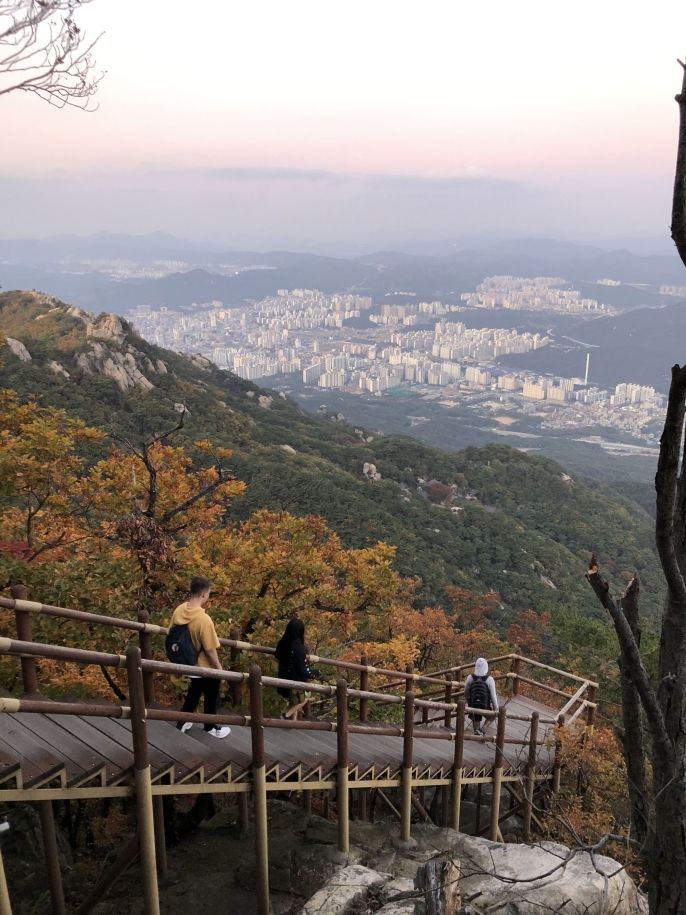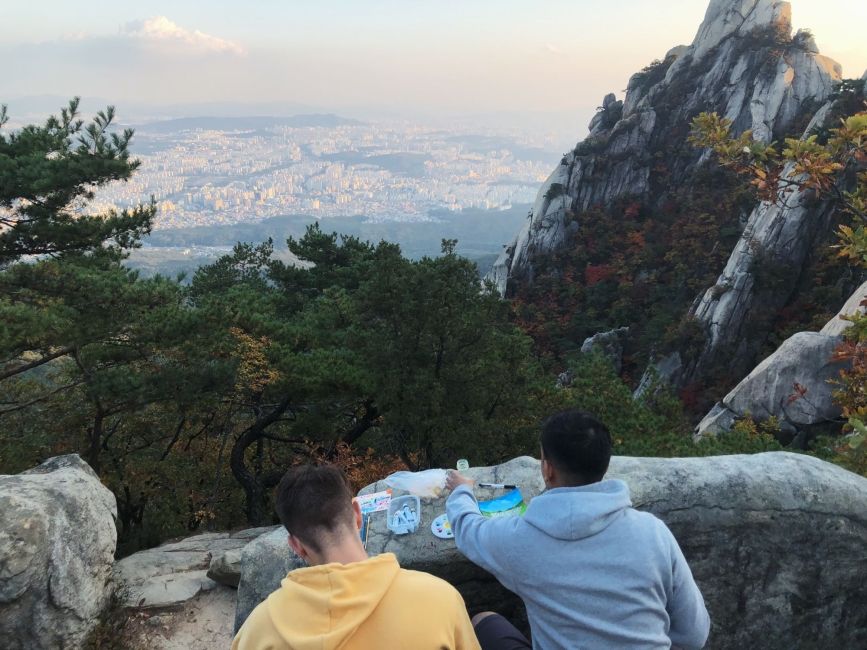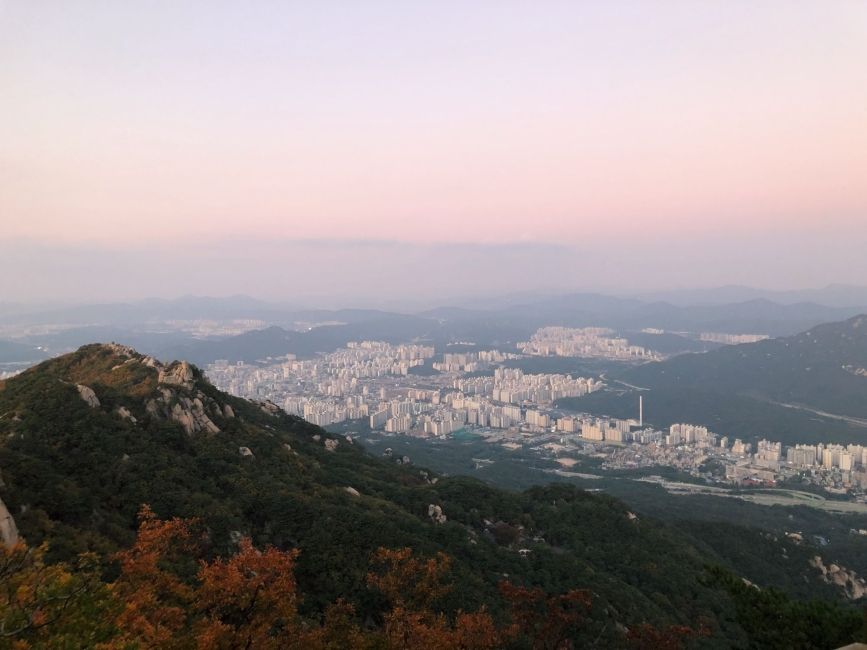Hiking Dobongsan Mountain
On a Saturday in late October, three of my friends and I took the subway an hour out of Seoul to Bukhansan National Park. After exiting the subway station we immediately looked up to see the powerful Korean mountain range looming in the distance. Before beginning our day of hiking we stocked up on kimbap and bakery bread from the booths of street food venders lined up along the base of the mountain. It wasn’t too hard finding the trailhead – all we had to do was follow the masses of ahjussi and ahjumma decked out in hiking gear for a twenty minute walk to the base. We grabbed a trail map at the nature center, picked a 5km route, and started our journey.
The beginning of the trail was very wide, nicely paved, and bustling with families. I began to fully understand how hiking was a favorite Korean pastime for people of all ages. After a few forks in the road, we left behind the crowds as the path got more rugged and steep. Higher and higher we ascended into the mountain, and I noticed the fall colors becoming more vibrant. At certain points the trail was nearly impossible to differentiate from piles of large rocks water once poured across. All of a sudden the hikers carrying ski poles seemed a little less ridiculous and more practical. Nevertheless we persisted on our highly inclined hike upward, and ran into one of the many temples nestled into the rocky mountain side. Buddist prayer chants echoed out of the temple speaker as the group rested for a bit, enjoying the view and colorful detail of the sanctuary.
From this point on the real test began. Although we only had 1 km left up to the peak, it was packed with unbelievably steep stairs that forced our calf muscles to the limit. Drenched with sweat and laughing at the unexpectedness of this challenge, our group slowly made it to our destination. When we finally arrived, all of the pain became worth it: a spectacular view of Seoul and the hilly forest layed out in front of us. Our loud city, filled with some 10 million people, had transformed into the quiet distance of geometric building shapes and slowly moving subway lines. We climbed to the top of a cluster of large gray rocks we nicknamed the “eagle’s nest” to eat a well deserved lunch and paint the immense view in front of us.
Before we knew it the warm yellow sun was fading into soft pinks and blues. We decided to ascend up a final push of rocks to the fenced overlook to get to the true peak. A moment I will never forget: watching the burning red sun set under the mountain mist, bending rays of light from pink to red to blue.
Realizing our choice to observe the sunset meant sacrificing daylight on our descent, the crew quickly rushed down the path and endless stairs. But the final moments of illumination ended all too fast and before we knew it we were forced to use phone flashlights to navigate the jagged path down. I’m surprised to say we only lost the trail in front of us once, but after sending a scout out and some calm backtracking, we eventually found our way again. The forest nightlife began to wake up: bats chirped above as I lead the group through countless spider webs. We played music off our phones to scare away any wild boars and kept close. By 10 pm we had safely made it back to the trailhead and filled our water bottles up with fresh mountain water pouring from a spout. To our delight, many casual eateries were open near the base to fill the stomachs of hungry hikers. Exhausted, sore, and deeply content, we cheered our makkoli drinks over a steaming pan of samgyupsal to one of the best days we’ve had in Korea yet.
Related Posts

Soul Searching in Seoul: Everything I Learned and What I Wish I Knew
Before I start crafting my “study abroad changed me” answers for friends and family, here are the practical things I wish I’d known. The things that would’ve saved me time... keep reading
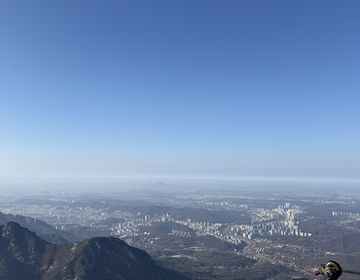
A Seoul Escape to Bukhansan
Get out of the hustle and bustle of Seoul and head to the peak of Bukhansan!
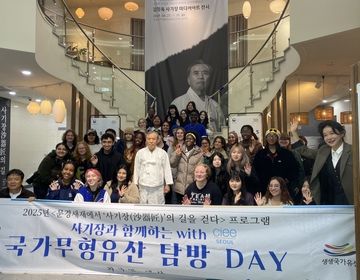
My Time in South Korea Attending Yonsei University: A Life-Changing Chapter
By: Zahrraa Al-Salman Studying abroad had always been a dream of mine—an opportunity to step outside of my comfort zone, immerse myself in a new culture, and deepen my understanding... keep reading
